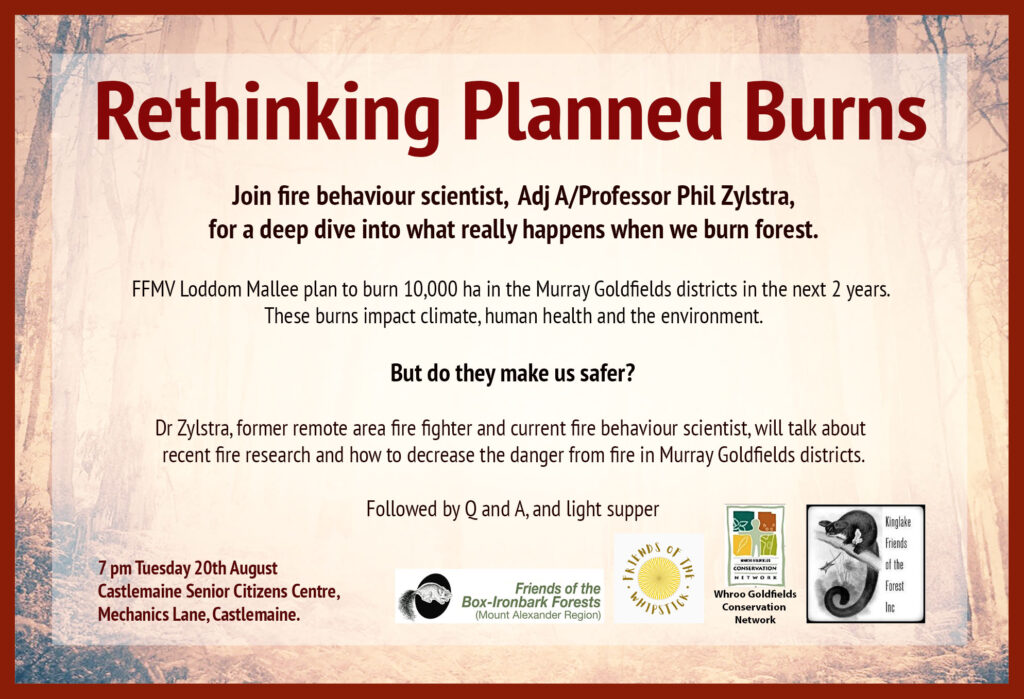
Kinglake Friends of the Forests, Friends of Box Ironbark Forests, Friends of the Whipstick and the Whroo Goldfields Conservation Network have engaged Dr Zylstra to speak at a public meeting at the Castlemaine Senior Citizens Centre at 7pm on Tuesday 20th August to explain his studies and model of bushfire behaviour. We are hopeful that a greater understanding of fire behaviour will lead to a review of the practice of prescribed burning, greater protection for the flora and fauna of the forests and a reduced risk of bushfires for communities.
Forest Fire Management Victoria (FFMV) plan to burn 10,000 Ha of forest in the Murray -Goldfields districts in the next 2 years. This is despite acknowledgement by the Victorian state department of Environment, Energy and Climate Action, DEECA that “Box-Ironbark forests are considered not prone to recurrent fires, making them possibly atypical of dry, sclerophyllous vegetation in Australia.”
With climate change creating more extreme fires and a longer fire season, governments have ramped up “hazard-reduction” burning. New research however shows the practice can actually make forests more flammable. Over time, some forests tend to thin out and become less likely to burn – hazard reduction burning disrupts this process.
Dr Philip Zylstra is a fire behaviour scientist and Adjunct Associate Professor from Curtin University. In his former work as a remote area fire fighter, he realised that planned burns for fire mitigation were not only causing immediate environmental harm, but could increase fire risk to communities in subsequent years. As many others noted, the bush responded to these burns with a dense flush of understorey growth. As a result, Dr Zylstra undertook Australia’s first detailed and systematic attempt to link the mechanisms that drive fire behaviour in forest environments, developing the only peer-reviewed model to show how forest structure and composition drives fire behaviour in Australian forests.
According to Prof Zylstra:
“The open understorey and historical rarity of bushfires in the Box-ironbark near Whroo are a reminder that some forests are natural advantages for controlling fire. Disturbances such as burning and logging can break down these valuable defences, causing regrowth that drives a pulse of elevated fire risk which can last for decades. The fires in the Pyrenees are a tragic example of this, as the average annual area of bushfires has nearly tripled since widespread logging began in that area. Certainly climate change is a major influence, but it doesn’t let us off the hook. The old modelling which drives the push to disturb forest does not account for the natural controls that undisturbed forests have placed on fire since the days of Gondwana.” (Zylstra, P. 2024, pers. comm., Feb 26)




 Click on image for info/order page
Click on image for info/order page Click on image for info/order page
Click on image for info/order page Click on image for info/order page
Click on image for info/order page




















